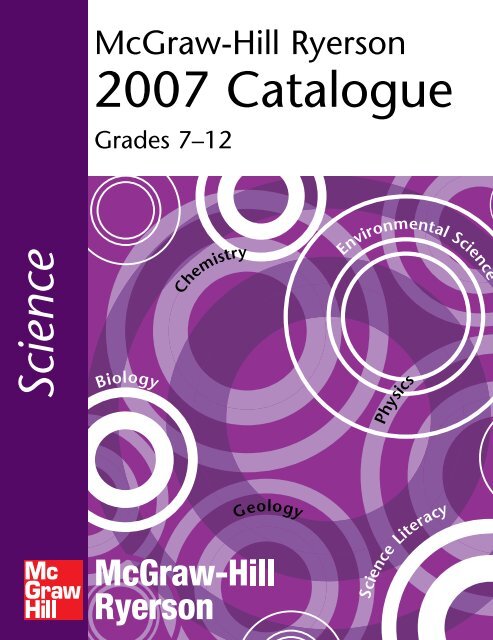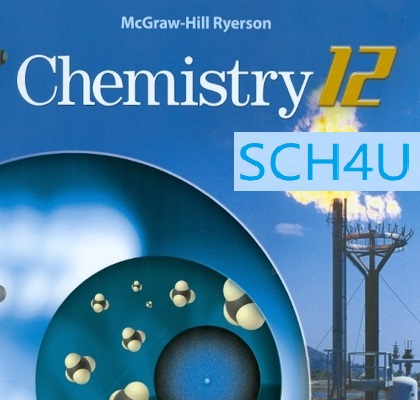

Writing molecular formulas and expanded molecular formulas (Concepts and Skills Review)ĭrawing complete, condensed, and line structural diagrams (Concepts and Skills Review) You will be introduced to the shape, structure, and properties of different types of organic compounds.īefore you begin this chapter, review the following concepts and skills: ■ĭrawing Lewis structures (Concepts and Skills Review)
#MCGRAW HILL RYERSON CHEMISTRY 12 ONLINE TEXTBOOK HOW TO#
In this chapter, you will learn how to identify and name molecules from the basic families of organic compounds.

Natural gas, rubbing alcohol, aspirin, and the compounds that give fragrance to a rose, are all organic compounds. Organic chemistry is the study of compounds that are based on carbon. In this sense, all vegetables are organic, no matter how they are grown. The original meaning of the word “organic” refers to anything that is or has been alive. The food industry uses “organic” to indicate foods that have been grown without the use of pesticides, herbicides, fertilizers, hormones, and other synthetic chemicals. Similarly, the word “chemical” is commonly used to refer to artificial compounds only. The word “natural” is often used in a manner suggesting that all natural compounds are safe and healthy. Are all “chemicals” harmful in food, as some of the current advertising suggests? Many terms are used inaccurately in everyday life. Other labels claim that the foods are “chemical free.” As a chemistry student, you are aware that these labels may be misleading. “Certified organic” and “all natural” are stamped on the labels of some foods.

S you wander through the supermarket, some advertising claims catch your eye. Of Organic Molecules 1.2 Hydrocarbons 1.3 Single-Bonded In addition, you will discover the amazing variety of organic compounds in your body and in your life.Ĭlassifying Organic Compounds Chapter Preview 1.1 Bonding and the Shape You will also learn how these compounds react, and you will use your knowledge to predict the products of organic reactions. You will learn how to name them and how to draw their structures. In this unit, you will study a variety of organic compounds. What about a drink? Milk and juice are solutions of water in which organic compounds are dissolved. Will you have dessert? Sugar, flour, vanilla, and chocolate are also organic. Are you having a sandwich for lunch? Bread, butter, meat, and lettuce are made from organic compounds. If you look out a window, the grass, trees, squirrels, and insects you may see are also composed of organic compounds. Medicines, clothing, carpets, curtains, and wood and plastic furniture are all manufactured from organic chemicals. In fact, the only parts of your body that are not mostly organic are your teeth and bones! When you study organic chemistry, you are studying the substances that make up your body and much of the world around you. Your skin, hair, muscles, heart, and lungs are all made from organic compounds. T this moment, you are walking, sitting, or standing in an “organic” body. Which topics interest you the most? How does society influence developments in science and technology? You can start planning your research as you go through this unit. In the unit issue, you will analyze an issue that involves chemistry and society. How do the structures of various organic compounds differ? What chemical reactions are typical of these compounds? How can you name different organic compounds and represent their structures? What do you need to know in order to predict the products of organic reactions? How do organic compounds affect your life? How do they affect the environment?īefore beginning Unit 1, read pages 110 to 111 to find out about the unit issue. Reactions of Organic Compounds UNIT 1 ISSUEĬurrent Issues Related to Organic Chemistry


 0 kommentar(er)
0 kommentar(er)
